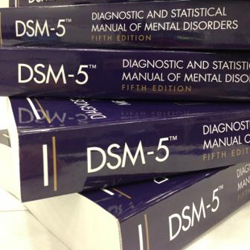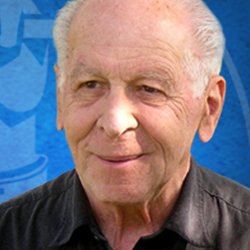Is the Quiet Release of the Revised Psychiatric Manual of Mental Disorders Another Sign Psychiatry Is in Crisis?

Thomas Insel, former director of the National Institute of Mental Health, admitted the Diagnostic and Statistical Manual of Mental Disorders has no scientific validity for its “mental disorders.”

The DSM’s “mental disorders” are labels subjectively applied to patients, allowing psychiatric drugs to be prescribed and patients’ insurance to be billed.

Because diagnoses of “mental disorders” are subjective, patients can receive entirely different diagnoses and psychiatric drug prescriptions from each mental health practitioner they visit.

CCHR co-founder, psychiatrist and humanitarian Thomas Szasz, M.D., wrote that children naturally have short attention spans, which grow by receiving appropriate attention from those who have their best interest at heart, not attention administered in the form of drugs.
American Psychiatric Association avoids publicity on revision to its controversial manual; changes ADHD to a brain-based disorder, without scientific proof.
Maybe it’s because just prior to the APA’s highly anticipated, highly publicized release of the DSM-5 in 2013, the first revision of the manual in 20 years, Thomas Insel, then-director of the National Institute of Mental Health (NIMH), undermined its credibility with the widely reported admission in his blog on the NIMH website that the DSM has no objective, scientific basis for its diagnoses.
“The weakness is its lack of validity,” he wrote.
The evaluation of human behavior for arriving at a diagnosis of a “mental disorder” is entirely subjective, unlike true medical diagnosis. Allen Frances, M.D., professor emeritus in the Department of Psychiatry at Duke University and chair of the task force for DSM-IV, explained: “There are no objective tests in psychiatry – no X-ray, laboratory or exam finding that says definitively that someone does or does not have a mental disorder.”
The DSM’s “mental disorders” are merely subjective labels intended to pathologize behavior, allowing psychiatric drugs to be prescribed and patients’ insurance to be billed. Because psychiatric diagnoses are subjective, patients can receive entirely different diagnoses and psychiatric drug regimens from each mental health practitioner they visit.
The original DSM-5’s proposed additions and changes to its hundreds of “mental disorders” had caused a firestorm of controversy even before its release. Critics warned that DSM-5 would lead to the further overdiagnosis and unnecessary drugging of children and adults.
Dr. Frances is quoted as saying, “If people make the mistake of following DSM-5, pretty soon all of us may be labeled mad.”
The uproar also focused on Big Pharma’s influence on DSM-5. In response to a query by Senator Chuck Grassley, the APA disclosed that 19 out of 27 (70%) of the DSM-5 task force members had direct ties to the pharmaceutical industry, revealing huge conflicts of interest in those in charge of preparing “psychiatry’s Bible.”
The APA’s current, low-profile release of the DSM-5-RT has another possible explanation. It comes at a time when researchers are referring to “a triple crisis” in psychiatry: (1) the lack of validity in psychiatric diagnoses, (2) the lack of understanding of the cause or development of mental disorders, and (3) a slowing of research and development of psychotropic drugs, which are psychiatry’s primary mode of treatment. This crisis has been unfolding against a backdrop of recent research concluding that psychotropic drugs are largely ineffective and carry serious risks to patients when taking and discontinuing the drugs.
Psychiatry in crisis is fueling renewed interest and research in electroconvulsive therapy (“electroshock”) and psychedelic drugs, which despite their known harms are being re-packaged as promising mental health treatments and alternatives to failed psychotropic drug treatment.
Release of the DSM-5-RT has been preceded by a new edition of the International Classification of Diseases (ICD), with its Mental Disorders section. Of particular concern is the fact that both the ICD and DSM are redefining and categorizing attention deficit hyperactivity disorder (ADHD) as a “neurodevelopmental disorder,” making it appear to be a neurological or brain-based physical disease, which is not supported by scientific evidence.
Dr. Fred Baughman, Jr., a retired pediatric neurologist and author of The ADHD Fraud: How Psychiatry Makes “Patients” of Normal Children, said the representation of ADHD as a biologic abnormality of the brain is “neurobiological propaganda.”
“Psychiatry has never validated ADHD as a biologic entity,” he said.
Rather than children gaining control over their behavior through the application of medical, nutritional, educational, or behavioral solutions to their behavioral problems, Baughman says children are led to “believe they have something wrong with their brains that makes it impossible for them to control themselves without a pill.”
In 2020, some 3.1 million American children under the age of 18 were prescribed ADHD drugs, with 58,000 of them under the age of 6. The U.S. Drug Enforcement Administration (DEA) categorizes ADHD drugs in the same category of highly addictive drugs as cocaine and morphine. The DEA states that their use can lead to “severe psychological or physical dependence” and that “these drugs are also considered dangerous.” ADHD drugs are proven to cause addiction, depression, insomnia, mania, psychosis, heart problems, stroke and sudden death. Suicide is a known risk when discontinuing ADHD drugs.
A search for “methylphenidate” on the Citizens Commission on Human Rights (CCHR) psychiatric drugs side effects search engine currently returns 26 drug studies and 35 drug regulatory agency warnings about the adverse effects of the drug. https://www.cchrint.org/psychdrugdangers/
Mary Ann Block, M.D., author of No More ADHD, says: “By taking a thorough history and giving these children a complete physical exam as well as doing lab tests and allergy testing, I have consistently found that these children do not have ADHD, but instead have allergies, dietary problems, nutritional deficiencies, thyroid problems and learning difficulties that are causing their symptoms. All of these medical and educational problems can be treated, allowing the child to be successful without being drugged.”
Dr. Frances criticized the overdiagnosis and drugging of children for ADHD. Writing in a 2014 blog, he noted: “Sales of ADHD meds are approaching an obscenely profitable $10 billion a year. It makes no sense that one in five teenage boys gets the diagnosis or that one in ten is on medication.”
This view was echoed by the late psychologist Keith Conners, who conducted the first formal trials on the psychostimulant methylphenidate, the amphetamine-like drug most commonly prescribed for ADHD. He later realized that ADHD diagnoses were out of control and called ADHD misdiagnoses "a national disaster of dangerous proportions."
CCHR took concerns about rampant ADHD diagnosing and drugging of children to the U.N. Committee on the Rights of the Child, which responded with hearings and a recommendation in 2015 for the establishment of a system for “monitoring of the excessive use of psychostimulants for children.” It also said that government should “take the necessary measure to prevent any pressure on children and parents to accept treatment with psychostimulant drugs.”
CCHR co-founder, the late professor of psychiatry and humanitarian Thomas Szasz, M.D., observed that children naturally have short attention spans, but psychostimulant drugs are not the solution.
“Their attention spans grow by receiving appropriate attention from parents, grandparents, siblings, teachers, schoolmates, friends, in short, from people who love them and have their best interest at heart,” he wrote. “Children’s attention spans do not grow from attention administered to them in the form of stigmatizing diagnoses and toxic drugs.”
CCHR addressed the history and harm of the DSM in its 2011 documentary, “Diagnostic & Statistical Manual: Psychiatry’s Deadliest Scam,” which follows the money trail between the psychiatric and pharmaceutical industries that has resulted in every aspect of human behavior – even the fussing of newborns – being made a possible “mental disorder” for which psychotropic drugs can be prescribed. It further explores how this nexus of unscientific diagnosing and pharmaceutical companies’ influence on drugging has impacted schools, courts, government, and the military, and tears families apart.
CCHR continues to make the unscientific nature of psychiatric “diagnoses” and the dangers of psychiatric drugs known so that people can make truly informed decisions on mental health treatment for themselves and their children.
WARNING: Anyone wishing to discontinue or change the dose of an ADHD drug or other psychiatric drug is cautioned to do so only under the supervision of a physician because of potentially dangerous withdrawal symptoms.
The Citizens Commission on Human Rights was co-founded in 1969 by members of the Church of Scientology and Dr. Thomas Szasz, recognized by many academics as modern psychiatry’s most authoritative critic, to eradicate abuses and restore human rights and dignity to the field of mental health. Since then, CCHR has helped obtain more than 228 laws that protect mental health patients.
The CCHR National Affairs Office in Washington, DC, has advocated for mental health rights at the state and federal level. The CCHR traveling exhibit, which has toured 441 major cities worldwide and educated over 800,000 people on the history of abusive psychiatric practices up to the present time, has been displayed in Washington, DC, at the Congressional Black Caucus Foundation Annual Legislative Caucus and other locations.
Anne Goedeke
Citizens Commission on Human Rights, National Affairs Office
+1 202-349-9267
email us here
Visit us on social media:
Facebook
Diagnostic & Statistical Manual: Psychiatry's Deadliest Scam
Legal Disclaimer:
EIN Presswire provides this news content "as is" without warranty of any kind. We do not accept any responsibility or liability for the accuracy, content, images, videos, licenses, completeness, legality, or reliability of the information contained in this article. If you have any complaints or copyright issues related to this article, kindly contact the author above.
